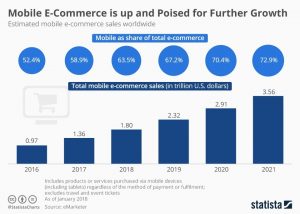Data Adolescence: Most Enterprise Firms Are At the Low End Of Maturity
Most enterprise marketers use over five channels. But three channels get 70% of the spend: digital advertising, email and websites, according to State of Audience Management Maturity 2019, a study by Merkle and MarTech Advisor.
Email is in this circle because it is the second most popular single channel, preferred by 29% of the respondents, compared to 31% who cite websites. But 32% say they utilize all of the channels.
The study is based on a survey of 100 senior U.S. marketing executives at enterprise-size companies.
It found that 61% of marketers are at the basic or non-existent levels of audience management maturity, with 44% making the basic tier.
What’s audience marketing maturity? It’s “the process of sourcing, managing, analyzing, defining, and activating customer data for cross-channel campaigns,” the study states.
In the nonexistent and basic levels, firms use manual processes. In the intermediate, they move to automated tools. An in the advanced stage, they use intelligent systems.
Advanced companies use predictive analytics, segmentation and decision engines to reach audiences in all channels, and there is a heavy focus on providing a seamless customer experience — everywhere.
In contrast, intermedia firms store all their data in one place, and are able to orchestrate some marketing activities across limited channels.
Here’s how those at the non-existent stage describe themselves: “We don’t have any meaningful audience management strategies, processes or tools in place. Our data is spread across organizational silos in different formats. We handle each campaign on each platform as an independent activity.”
Of the firms surveyed, 41% have access to individual dat and 29% have access to data at the account level. However, 23% have access only to anonymous data (device or cookie level) and 7% only to cookie data.
Their analytics tools include Google (18%), site (11%), search (9%), social media (7%), Adobe (5%) and others (16%)
Over 60% store their audience data in CRMs, ESP/MAPs, and marketing cloud storage. But only a tiny percentage deploy such advanced tools as CDPs.
In another finding, 56% are at the “pre-built static level” in mapping the customer’s journey and aligning messages and campaigns along that path. Greater personalization and contextualization occur at higher levels of maturity.
At the lower end, 22% have ML- and AI-powered “next best action” or “no journey mapping at all” to drive campaign messaging, it continues.
The study concludes that there is “much confusion around the true capabilities of currently-deployed tools or platforms; as well as what real-time campaign optimization could mean for campaign outcomes.”
(21)
Report Post








